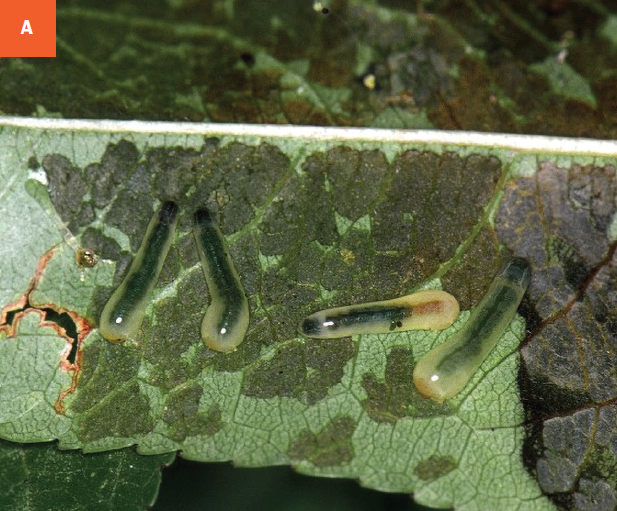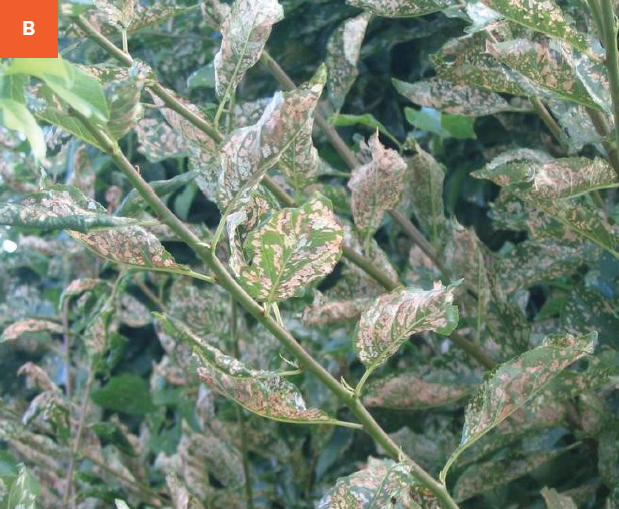Pear Sawfly or Pearslug
Caliroa cerasi
HOST Pear, cherry, plum, quince, apple, cotoneaster
DAMAGE/SYMPTOMS These insects are not actually true “slugs” but are closely related to wasps. The damage is quite distinctive, showing a skeletonizing effect on the leaf surface. They can cause browning of the leaves, premature leaf drop, and reduced fruit size or production the following season.
LIFE CYCLE Adults emerge in late June to July. Females lay eggs on the upper surface of the leaves. The larvae feed on the upper leaf and drop to the soil to pupate. A second generation of adults emerge within a couple of weeks. The second generation can often be more damaging to the leaf tissue.
MANAGEMENT Pearslugs can be washed off with vigorous jets of water. Wood ash or dirt thrown on the slugs will help to dry them out and kill them. There are several contact insecticides labeled for chemical control, including horticultural oils, neem oil, or products with the active ingredient spinosad.
A Pearslug larvae on leaf. B Pearslug damage on peach leaf.


